How I Do It: AUTISM AND AAC: FIVE THINGS I WISH I HAD KNOWN by Deanne Shoyer
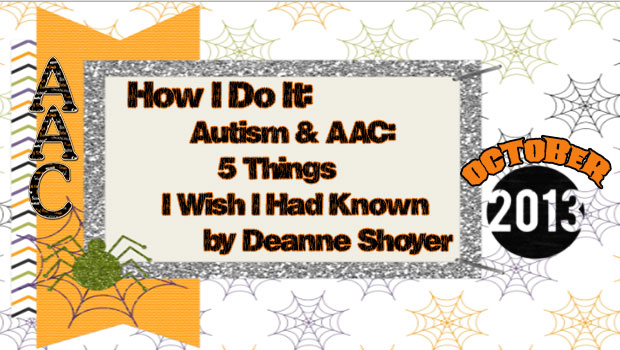
We are so pleased to have connected with Deanne Shoyer from Small But Kinda Mighty and even happier that she is our guest blogger today. Deanne is a mom of twin boys who both are on the autism spectrum. Deanne successfully fundraised to buy iPads for her boys and has been active for more than 3 years in social media and in the special needs app community. She has written about many things but often focuses on implementing AAC in a very PrAACtical way. Please feel free to share this very important post as she highlights AAC, what she has learned, and how it may help others.
by Deanne Shoyer at Small But Kinda Mighty (original post at Small But Kinda Mighty)
In the title of this post I’ve linked autism and AAC for a specific reason. A lot of the points here are equally applicable to people who have a different disability but my argument in this particular post is for ALL autistic people to have access to AAC, regardless of whether they can speak. More on that later. If you make it to the end of the post I’ve got some news about price drops for two very good AAC apps and a giveaway for one of them.
I’m not a speech professional, so my AAC posts are written solely from the perspective of a parent whose children are both autistic and AAC users. My purpose in writing this particular piece is two-fold:
- For parents of autistic children, these are some of the things I wish I had known when my boys were first diagnosed. But regardless of your child’s age it’s never too late to start using AAC, try it again or, if your child’s current AAC system isn’t working, to change direction.
- For speech professionals, teachers and any others involved with autistic people – if communication strategies are not at the heart of everything you do to provide autistic people with support, then I invite you to rethink your assumptions and approach.
Communication (not speech) must be priority number one
When I think about autism “therapies”, a lot of them are focused on trying to force autistic children to become more typical – extinguishing problem behaviours and trying to ‘teach’ social skills, for example. In my opinion, any strategy that does not prioritize communication skills is not only bound to fail but it is also doing a huge disservice to the autistic person. How can an autistic child socialize with his peers if he can’t communicate with them? Why are we spending so much time suppressing behaviours instead of giving a child the means to tell us how she feels?
Here’s an excerpt from a draft IEP that a parent shared with me:
Managing Anger and Aggressive Behaviour…Annual Program Goal: Child will not demonstrate any aggressive behaviours [and] will not display disruptive behaviours… Constant redirection and reminders to keep his distance, no hands on, and personal space [sic] are necessary. The “negative” behaviours become more apparent in times of anxiety, i.e. Transitions.
This child has some speech but it’s mostly echolalic. There was nothing written in this draft IEP to indicate that anyone was interested in, or attempting to understand why, this child was feeling angry or displaying aggression. There was also nothing mentioned about giving him an alternate means of expressing himself. I see so much lip service paid to the idea that ‘behaviour is communication’; if we believe it (and I do) then we need to give all our children far more effective and safe ways of communicating what they have to say. I’ll share with you an example of something I’m working on right now with Owen with respect to running. In Owen’s safety plan for school I added two things:
- Encouraged those who work with him to, whenever possible, run after him to see if they can ascertain where he’s going and what he wants to do
- Give him, and model for him, ways that he can tell them what he wants instead of running off. At home he likes to run and watch two things in particular – the doors to the garage in our apartment building and elevator doors. Rather than focusing on the behaviour – ‘I must stop him from running away!’ – I’m showing him ways he can ask for what he wants instead. We can then all safely walk over and watch doors open and close
Another example of a behaviour that people often say that want to extinguish is flopping. In Owen’s case I call it ‘going boneless’ (he’s turned it into a fine art). ![]() Again, I don’t want to stop his flopping, I want to give him more effective ways of telling me he doesn’t want to do something or go somewhere. In his chat folder I’ve given Owen a cornucopia of ways to say ‘no’:
Again, I don’t want to stop his flopping, I want to give him more effective ways of telling me he doesn’t want to do something or go somewhere. In his chat folder I’ve given Owen a cornucopia of ways to say ‘no’:
You often hear therapists and teachers talking about how powerful rewards are as incentives and it’s true, but one of the most overlooked rewards out there is giving people the ability to refuse to do something. We need to respect our children’s right to say ‘no’. That doesn’t mean I automatically ‘give in’ every time – there will be times when we simply have to go somewhere or he has to do something he doesn’t want to (like cleaning his teeth) but we can accomplish these things whilst still respecting the ‘no’.
For example, Oliver and Owen’s needs are incredibly dissimilar. Oliver has to go outside as often as possible – he wants to run, play and explore, whatever the weather. Owen doesn’t. So sometimes, when we go for a walk, Owen won’t want to go and will flop. By giving him options to tell me how he feels I’m hoping that we can replace that behaviour with language. One of the buttons I use in responding to him is ‘I understand’. I’m telling him that I respect, hear and understand what he’s saying but that his brother really needs to go out and I can’t leave him home alone. I then explain that at the end of the walk we’ll have a cookie and that I have lots of books he and I can read together while his brother plays in the playground. This seems to be working well.
AAC isn’t just for non-speaking autistics
I mentioned at the beginning of this post my belief that AAC should be made available to all autistic people whether they can or cannot speak. One thing I frequently hear from autistic adults is how their speech is often the first thing to go when they are stressed, or sometimes just for no apparent reason. You can read Paula C. Durbin-Westby talking to Ariane Zurcher of Emma’s Hope Book about her experiences in this regard. Also, a short but powerful post from Yes, That Too reminding us that her identity isn’t bound up with her ability to speak.
Oliver is verbal but Proloquo2Go (P2G) is also on his iPad. Right now I use P2G on my iPad to communicate with Owen – I plan to expand that and include Oliver for a few reasons:
- He will better understand his brother’s primary means of communication and there will be one more person in the house modelling its use
- I’m hoping it will help with Oliver’s development of functional language – most of his speech is echolalic.
- He will have access to a back up method of communication if his speech ever fails.
All of us involved with autistic people need to get behind the idea of AAC Acceptance. Robin Parker at Praactical AAC wrote about this, outlining some of the barriers and possible ways to get around them. One of the ways we can get AAC accepted is to do whatever we can to enable access to AAC for all autistic people. We have to work to destroy this dangerous concept that speech is more valuable than any other form of communication. Again, from the draft IEP I mentioned above:
Annual Program Goals: Child will articulate his wants and needs by using a clear, consistent voice… Often when Child speaks he uses a very quiet voice that is very ‘robotic’. He will often speak by sucking in air and speaking words… Learning Expectations: Child will use a clear, strong voice to express his wants and needs to a [sic] 90% of each day at school.
Am I alone in thinking this is both pointless and potentially damaging? Why is the focus on clear speech instead of increased communication?
If you don’t agree with me about this then read a real-life example showing the impact that a lack of AAC Acceptance can have on a person. Sparrow Rose Jones blogs at Unstrange Mind and has recently released an e-book of essays called No You Don’t: Essays from an Unstrange Mind, which I downloaded from Amazon for only $2.99 (so if you like the idea of supporting autistic adults then maybe you can download it too, for less than the price of a latte).
Sometimes I am unable to create speech with my mouth and that’s something that no amount of social performance can hide. As I got braver with being myself in public, I tried going to classes on days when I couldn’t speak. But I ended up dealing with some particularly nasty bullying in a small economics class when I showed up unvoiced (using my computer to communicate.) I realized that there is only so much “eccentricity” others are willing to accept and when I transgress they can become brutal in the ways they communicate that they are refusing to allow me to be different, whether I can help it or not. Just as friends who use wheelchairs part-time have complained to me about people who refuse to accept that they need the wheelchair sometimes because they don’t need it all the time, I get no acceptance for the times I cannot speak because other times I can speak quite well.
So, since it is impossible to hide those times when I am unable to speak and since I refuse to pretend to never be able to speak, just to get acceptance for those times when it’s impossible for me, instead of trying to “perform normal” on those days, I just hide. If I can’t hide my autism, I hide my whole body and I hate that. I hate that who I am is not “okay” with others. It is okay with me, but the way others treat me is not okay, so I hide and I call myself a coward when I do it and I hate it.
AAC is a very specialized field with a limited number of individuals who have relevant expertise (but everyone can use it)
Looking back, I wish I had known that not all speech therapists are well-versed in AAC technology. I wish I hadn’t believed that being followed by a speech therapist meant that the best communication options for my children were being pursued.
Before their autism diagnosis the boys were enrolled in the Toronto PreSchool Speech and Language program. We learned a lot and I found the parent training programs particularly useful. Once I had confirmed that both boys were autistic they were transferred from the TPSL program to a program at the Geneva Centre for Autism which integrated speech, behaviour and occupational therapies. At this time Owen started using a Picture Exchange Communication System (PECs), which definitely helped ease his frustration and I also started using other visual supports which proved helpful for both boys.
Since then it feels like I’ve been trying to persuade all the therapists that work with Owen that he is capable of more. He mastered Stage 4 of PECs and was working on Stage 5 but the focus was still on requesting. His supervising therapist in IBI agreed to include him in an iPad study where he used Proloquo2Go with great success. As he had done so well in the study she referred him to the Augmentative Communication and Writing Aids (ACWA) clinic where he would receive an assistive technology assessment and, if approved, be provided with an AAC app.
I was so excited – finally Owen was going to get an AT assessment! I was under the (erroneous) impression that once referred to ACWA it would not take long for him to be assessed. After 3 months on the ACWA wait list I called for an update and was told it would be an 18 month wait. Luckily I have amazing friends – I was gifted a copy of P2G and an AT specialist helped me put together communication boards for Owen on her own time – but it shouldn’t be this way. My advice:
- Find out what the wait lists for AT assessments are in your area and get your child on one at the earliest opportunity.
- Speech therapists have to serve immensely diverse populations whose speech difficulties arise from an incredibly varied array of causes. It’s not a knock on SLPs to state that not all of them have expertise with AAC. I do however challenge all SLPs to ensure their focus is always on increasing communication rather than just speech production.
- Behavioural therapists should not be allowed to interfere with AAC instruction. Some of the therapists that worked with Owen wanted to constantly move the PECs he used just to make sure he knew the words, rather than remembering what position they were in. I feel awful that I let them do that. I do not do this now – you’ll note that Owen’s communication boards inP2G are set up in a way that the buttons stay in the same place and are always the same size. Ones that we aren’t using yet are hidden which is why you see gaps in some of the screens. Dana at Uncommon Sense recently wrote a post explaining the importance of motor planningwhich is well worth your time to read. As she says, what if you woke up each morning to find the keys on your keyboard had been rearranged?
AAC does not inhibit speech and language development
I learned this wasn’t true very quickly, as Oliver used PECs to support the development of his speech and language. However, it’s an old canard that remains alive and well and it’s preventing AAC Acceptance. There’s lots of data to support the fact that AAC use does not impede speech and language development – here’s a bunch and here’s one autism-specific study and here’s five more for good measure.
The importance of core vocabulary
I encourage everyone to proceed on the assumption that their child will never speak. That’s a hard thing for a lot of parents to accept but realizing that communication is so much more important than speech is very liberating and brings with it a certain clarity:
- For autistic children, instead of implementing supports that deal only with an immediate need, why not provide them with something that could be all they ever need? If they end up not needing it what damage has been done? None.
- Most of us like the idea of our children learning other spoken languages. Here in Canada it’s common for English-speaking parents to want to enrol their children in French Immersion classes so that their kids grow up speaking both of our country’s official languages. So what’s the downside in teaching our children to use AAC? We’ve given them another language, another skill, and an alternate way of communicating that is there whenever they need it.
- Parents rightly worry about their autistic children being abused and this can lead to them advocating for things like cameras in classes. If we instead focus on giving our children a robust alternative communication system, then our kids can advocate for themselves. This ability to advocate for themselves will continue into adulthood and after we’re no longer there to support them. One of the most powerful arguments for the importance of an AAC system that provides the user with core vocabulary was a video you can find on one of Lauren Enders Pinterest boards. Lauren is an AT specialist and if you Pin and are interested in AAC then she is a must-follow. (She also has a Facebook page.) Take a look at this short video and wonder what might have happened to this man if all he’d ever been taught was how to make requests:
Price drop on two great AAC apps and a giveaway for one
When Owen was using PECs we used Grace app with a lot of success. If you’re an SLP, teacher or parent using PECs and you don’t yet have a copy of Grace app then now’s the time to buy as it’s currently only $9.99. It’s universal, easy to use and way more effective than binders full of laminated pictures on velcro strips. The mother who created this app for her daughter recently spoke at TEDxDublin about why she developed the app and how everyone deserves to be heard. It’s well worth 16 minutes of your time to watch:
Another app I’ve used with both boys is So Much 2 Say by Close 2 Home Apps. Until November 1st this app is only $14.99 and it’s a steal at that price – with access to 9,000 SymbolStix symbols and the ability to drag and drop communication cards from one iPad to another, it’s a must-have for teachers and therapists in particular. If you don’t have $14.99 handy then I do have one copy to giveaway. Enter via the rafflecopter below.
Another app I’ve used with both boys is So Much 2 Say by Close 2 Home Apps. Until November 1st this app is only $14.99 and it’s a steal at that price – with access to 9,000 SymbolStix symbols and the ability to drag and drop communication cards from one iPad to another, it’s a must-have for teachers and therapists in particular. If you don’t have $14.99 handy then I do have one copy to giveaway. Enter via the rafflecopter at Small but Kinda Might (Scroll to bottom of post)
Filed under: PrAACtical Thinking
Tagged With: AAC Resources, Deanne Shoyer, myths
This post was written by Robin Parker
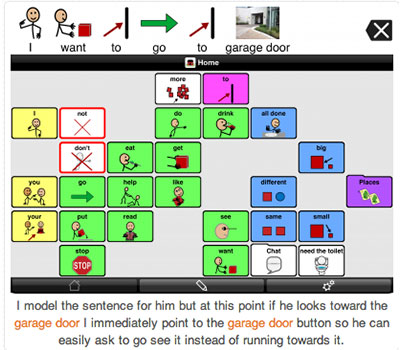

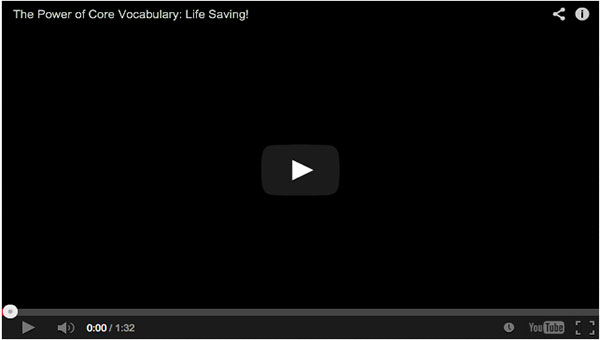




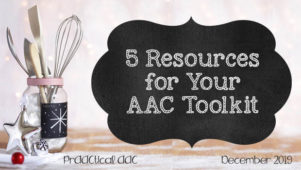
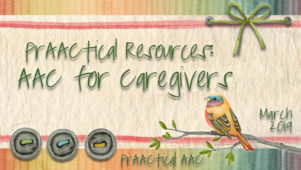

9 Comments
Thank you. Great post. These are the things we are teaching our educators and parents via our training through our DS education Alliance program at the Down Syndrome Connection of the Bay Area in Northern California. Your post does not only pertain to Autism but to disability as a whole. I run a non profit for people with Down syndrome and what you are talking about here is true. Behavior is communication and due to many reasons such as cognitive delay, apraxia, expressive receptive gap, low muscle tone etc.working on speech articulation alone does not work. We must offer Oral Motor and AAC for our folks with DS of all ages so they can PARTICIPATE in life. We have preschoolers successful with AAC. We have seen lives change for kids who have both ASD and DS. We know for a fact that the inability to express yourself causes “the drop” and the darting and the aggressive behavior in most cases. By offering AAC to a child or an adult that does not speak or speaks unintelligible you are offering the gift of independance. You are giving them back control to make choices and you are allowing them to participate in life while expressing basic needs. Thank you. Your post is another validation for the AAC work we are doing.
Thank you so much for your post. I just purchased both apps. I agree that COMMUNICATION is the top priority. I am an SLP and I work with young adults who struggle to communicate. I am really trying to educate my staff, parents, and colleagues on AAC this year. It really helps to get a parent’s perspective. I will definitely pass this along.
Definitely check out the Facebook group “ask me I’m an aac user”
Great post! I especially love the many ways to say no!
This is an excellent article. I am a self-contained ASD teacher in Miami, Fl. I totally agree with your persepective and have always taught communication rather than perfect speech. Will be getting the products.
Thank you sooo much for sharing.
My son uses an android app called Autism myCommunicator. It works great for him. Helps him communicate with me and my husband.
Thank you for a superlatively great post. I am sorry it took me a few years to find it. I shared it on my site and give it the autistic seal of approval.
I am so glad I discovered your AMAZING article! What fantastic information! I can hardly wait to share it with other parents at an AAC Networking group we are starting in our district. As one of the AT Specialists, I realize all that I still don’t know and I am grateful for your input to help me learn and teach parents. Thank you!
Good blog post. I certainly appreciate this site.
Stick with it!